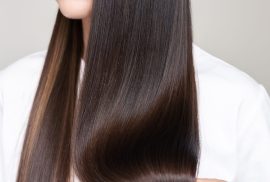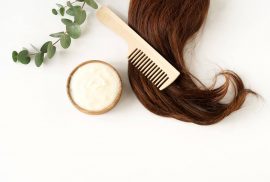The Ultimate Guide to Cleaning and Sanitizing Your Hair Styling Tools
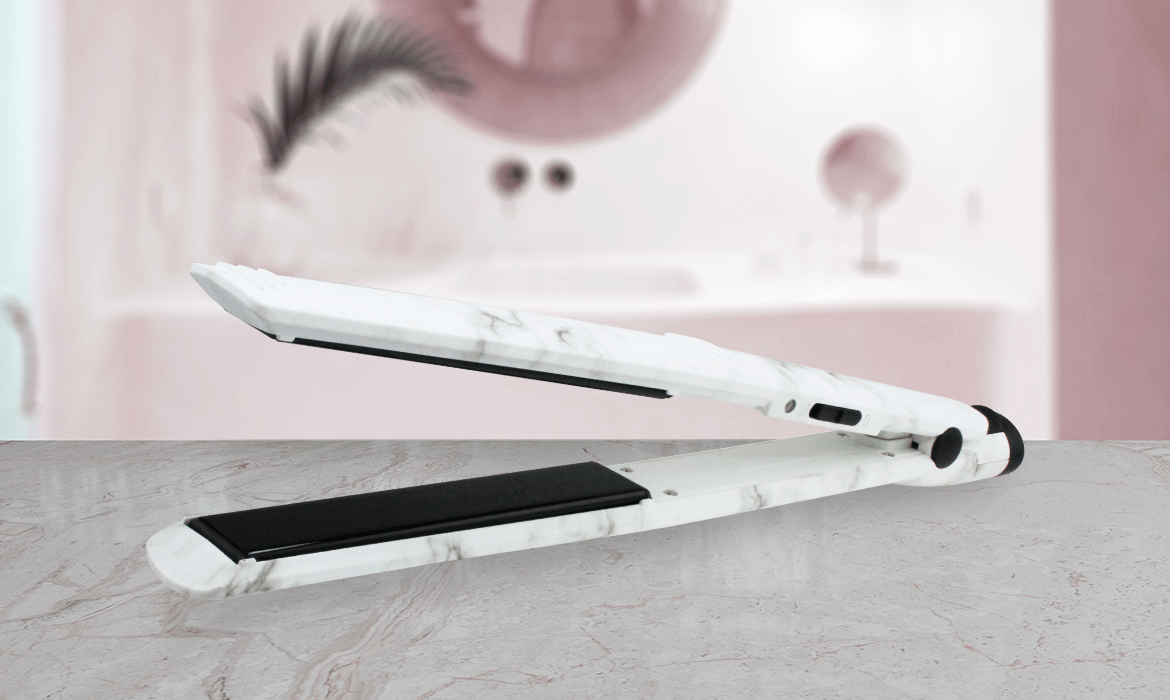
Now and then, you might come across someone who approaches haircare with a carefree wash-and-wear philosophy: no brushing, no styling, no hot styling tools required. However, these people are something of a rare breed. When it comes to hair styling, most of us have an established system, whether it be as straightforward as towel-drying and brushing or a full-on blow-dry and curl routine.
Take a moment to ask yourself this question: how often do you use your hair styling tools? Whether you reach for them every week, daily, or after every bath, chances are that your hair styling tools are due for a deep clean. Today, Evalectric is going to talk you through exactly how to sanitize/clean styling tool products.
First Thing’s First: Why Bother?
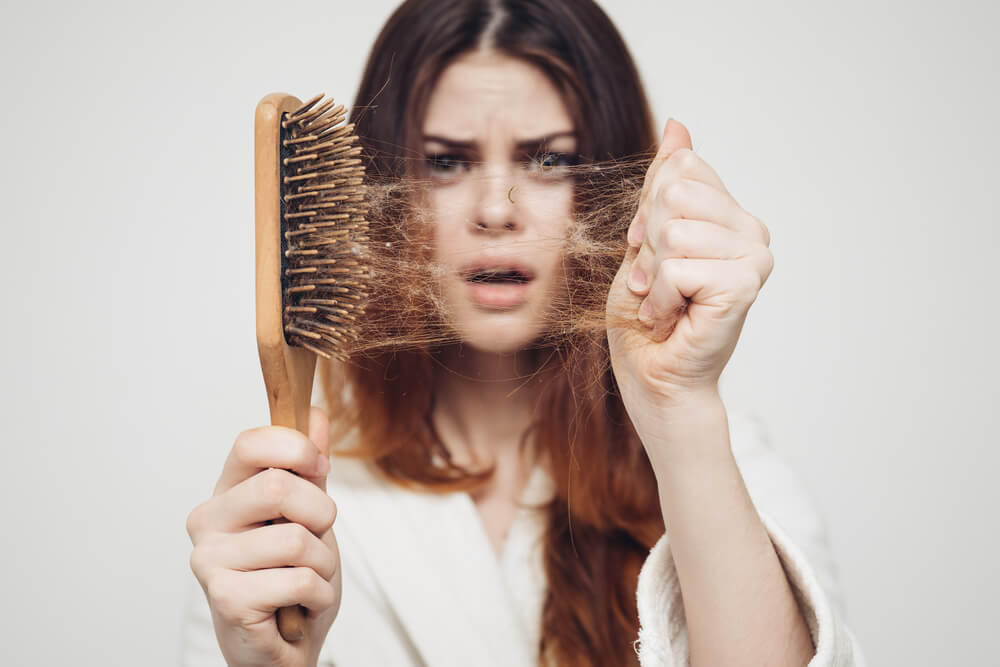
If you’re surprised that people regularly need to sanitize/clean styling tool products, we urge you to take a good hard look at your hairbrush. If you can’t recall the last time you gave it a sanitizing session, it’s likely to have a good amount of stray hairs, dust, and mysterious white grains tangled through the bristles.
Science tells us that the human head is a breeding ground for bacteria. Sweat and sebum make the scalp and hair shafts especially appealing to germs, providing them with the perfect place to settle and multiply. In turn, bacteria from the head can transfer to the styling tools we use every day. Even if you only use your brushes and irons after shampooing, scalp buildup and residue from styling products can still find their way into the nooks and crannies of these items.
In a study, a team of researchers from the University of Arizona found that hairbrushes have an average of 3,409 bacteria sets per square inch. That’s even more bacteria than pet food bowls and bathroom sinks. Blow dryers, on the other hand, are fitted with rapidly spinning blades that turn cool air hot. Throughout the process of absorbing and heating air, clumps of dust build up inside the device.
What Happens if You Don’t Clean and Sanitize Styling Tools?
With so many ways for our brushes, dryers, and irons to gather dirt and dust, a bigger question remains: what happens if you don’t bother to sanitize/clean styling tool products?
For one, using dirty styling tools is pretty much the same as directly brushing, blowing, or pressing bacteria into your locks. Additionally, your beloved hair styling tools may not perform as effectively over time if you do not clean them regularly. This is especially true for electronic styling devices, like blow dryers and hair irons.
Making sure to sanitize/clean styling tool surfaces and crevices will help them last longer. Follow these steps to get more out of your styling tools:
How to Clean Hairbrushes
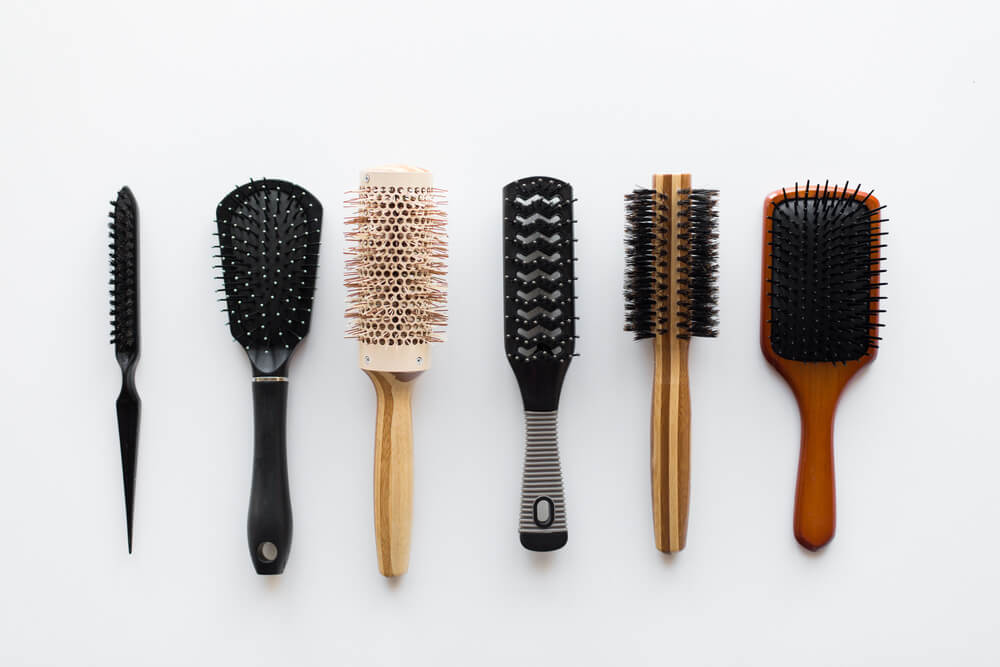
Hairbrushes are the most commonly used hair styling tools in the game, and they also happen to be among the hardest to clean. To avoid having to spend long periods navigating your way through a forest of tangles and bristles, we suggest cleaning your brush no less than once a week — especially if you use it several times a day.
Here’s what you’ll need:
- A narrow object with a small or pointed tip (i.e. a rat tail comb, a closed pair of scissors, a barbecue stick, or a bobby pin)
- Cotton swabs or a toothbrush
- Warm water
- Shampoo
- A newspaper or garbage bag, optional
- Gloves, optional
Once you have everything you need, follow these simple steps:
- Layout a sheet of newspaper or a trash bag to catch the stray hairs you’ll be cleaning out of the brush. Doing this will make for easier clean-up. If you prefer not to get your hands dirty, you may also wear a pair of disposable gloves.
- Take a narrow, pointed object. Rattail combs work best, but anything narrow and sharp enough to fit between your brush’s bristles should suffice. Slide it under the tangled hair in your brush, tugging until the hair loosens enough for you to pull it off with your hands. Repeat this process until all of the hair is removed from the brush.
- With all of the hair strands out of the way, you may see clumps of build-up still stuck on the brush. Take a cotton swab and run it along with the spaces between the bristles. If your brush’s bristles are short enough, you may opt to use a toothbrush instead of cotton swabs for this step.
- Fill the sink with warm water and add in a few pumps of shampoo. We recommend using Evalectric’s Moisturizing Shampoo. Gently mix the shampoo into the water.
- Let your hairbrush float face-down in your makeshift pool. Let it soak for 10 to 15 minutes.
- After soaking, run the brush under clean water. Leave it to air dry before use.
How to Clean Hair Dryers
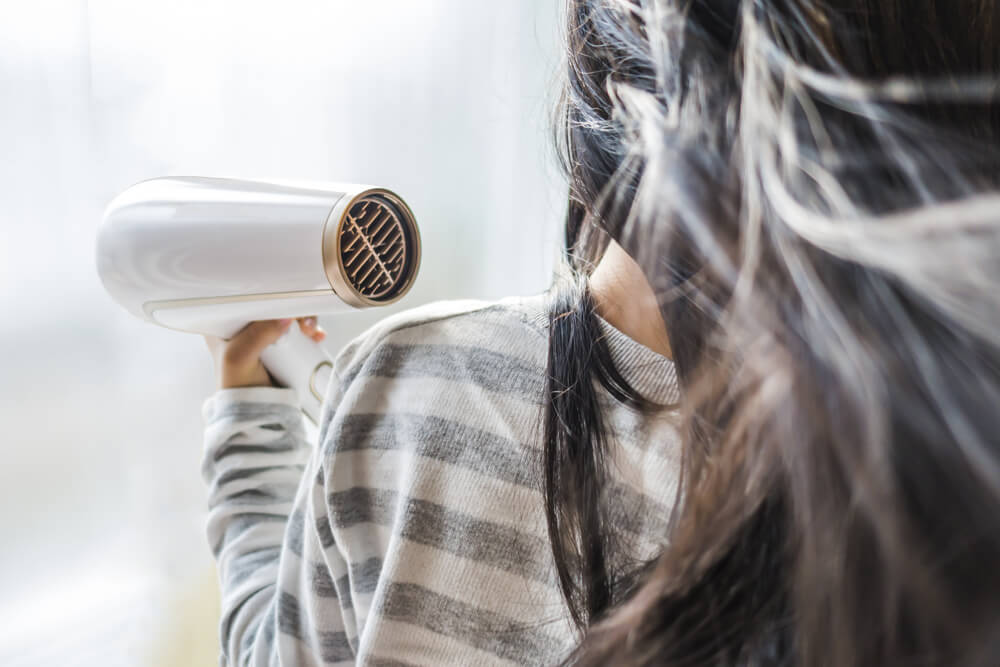
Because of the way they are built, hairdryers are a gold mine for lint clouds and dust bunnies. If you haven’t sanitized your dryer in a while, simply peeking through the back vent should give you a preview of the cleaning you have cut out for yourself. Thankfully, it isn’t all that difficult to sanitize/clean styling tool products like hair dryers — especially if you make a habit of cleaning yours once or twice a month.
First, gather your cleaning tools. Here’s what you’ll need to get the job done:
- Tweezers
- A toothbrush
- Toothpicks
- Cloth
Ready to get into it? Refresh your dryer’s airflow by following these steps:
- Remove the back vent of your hairdryer. This should easily click or twist off. If you find that your hairdryer is built differently from standard models, you may need to refer to the instruction manual that came with the device.
- Using a pair of tweezers, remove the lint and dust clouds that have built up inside your dryer.
- After removing the larger clumps, use a toothbrush to pick up the finer pieces. If your blow dryer has small holes, you may use toothpicks to push microparticles out.
- Reassemble your blow dryer and carefully wipe it down with a cloth.
How to Clean Curlers and Straighteners
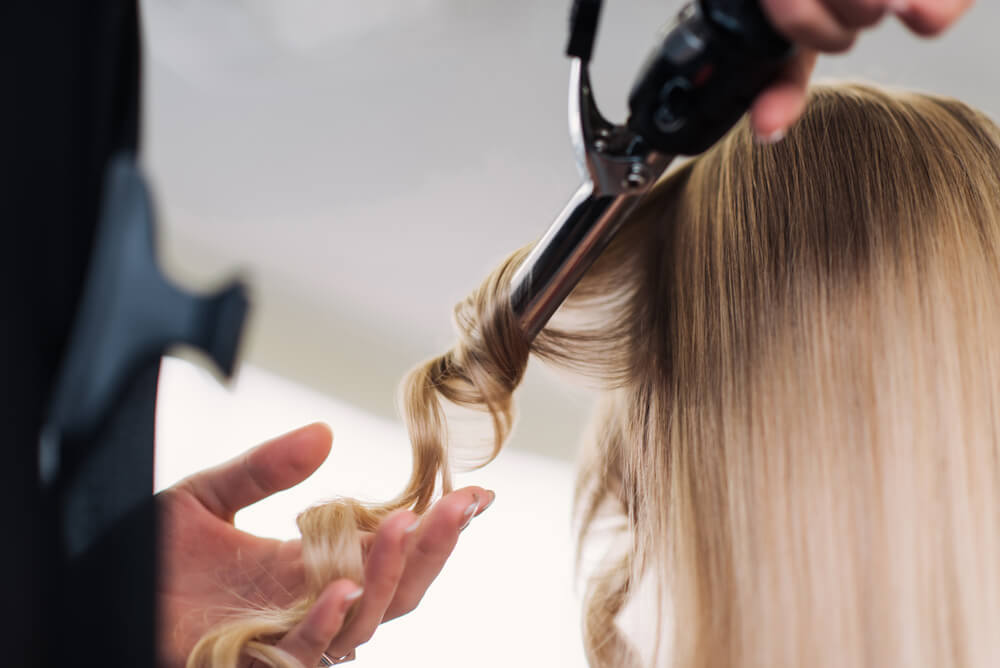
Hot tools like curlers and flat irons might not seem like they require regular cleaning. However, if you use them frequently enough, you’ll soon see discoloration and sticky build-up showing through on the surface of your iron. If you use your hot tools a couple of times a week, you’ll want to sanitize/clean styling tool products once or twice a month. If you use them to style your hair every day, you’ll want to disinfect your tools at least once a week.
Here’s what you’ll need:
- Rubbing alcohol or white vinegar (in a spray bottle)
- A cleaning rag
Sanitize/clean styling tool nooks and crannies by doing the following:
- Plug your curler or straightener in for a few minutes, allowing it to warm up. Once the tool is warm (not hot!), unplug it. Remember, cleaning buildup is much easier when the hair iron is warm.
- Before the iron cools, spritz it with rubbing alcohol from roughly six to eight inches away. For a deeper clean, you may opt to use white vinegar instead of alcohol. White vinegar is an effective disinfectant capable of killing several types of germs.
- Thoroughly wipe the tool with a cleaning rag.
- Repeat until the straightener or curling iron is completely clean.
An important reminder: never submerge your hair straightener or curling iron in the water. This poses danger, and may also cause your iron to rust.
How to Choose the Right Hair Styling Tools
If discussing how to sanitize/clean styling tool products left you wanting to expand your collection, we’ll help you out. Balancing form and function, we at Evalectric have been serving up innovative styling tools and hair care products since 2013.
Here’s a quick guide to help you choose the best iron to suit your hair styling needs:
Hair Straighteners: Ceramic vs. Tourmaline vs. Titanium
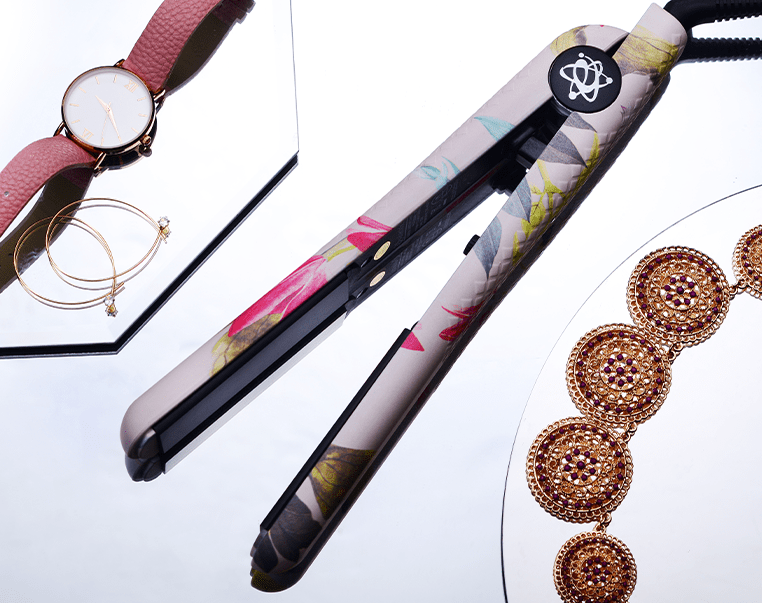
Save for their colors and designs, most straightening irons may look similar. After all, they all form a large V-shape with two prongs fitted with a metal plate on each side — there shouldn’t be much else to it, right?
Wrong. This is exactly where the biggest difference between hair straighteners lies. There are a variety of metals used in straighteners. Each kind has its unique benefits, making them ideal for handling particular hair types.
Consider ceramic plates, for instance. Ceramic plates are the most common in styling tools because of their ability to evenly spread heat and smoothen the look of the hair. This makes ceramic plates great for those with thin and brittle hair. Evalectric’s Classic Stylers come with 100% ceramic plates. With infrared technology that gently penetrates the hair, these straightening irons lock in moisture and minimize the look of damage.
Titanium irons are another common choice. Titanium plates are typically preferred by hairstylists because they are capable of heating up quickly and maintaining high temperatures for extended periods. Some of Evalectric’s titanium straighteners include the Ultra Beauty Titanium Straightener and the Titanium Pro, both of which are great for handling thicker hair.
Arguably the dark horse of heat styling, tourmaline plates are quickly becoming as popular as ceramic and titanium. Tourmaline’s claim to fame is its negative ion technology, which can help combat the look of frizz and dryness. By reacting with the positive ions in the hair, the negative ions in tourmaline plates strike a balance that gives way to hair that looks smooth, silky, and strong. Consider Evalectric’s Blue Tourmaline Straighteners, available in 1-inch and 1.25-inch sizes.
Curling Irons: Understanding Barrel Sizes
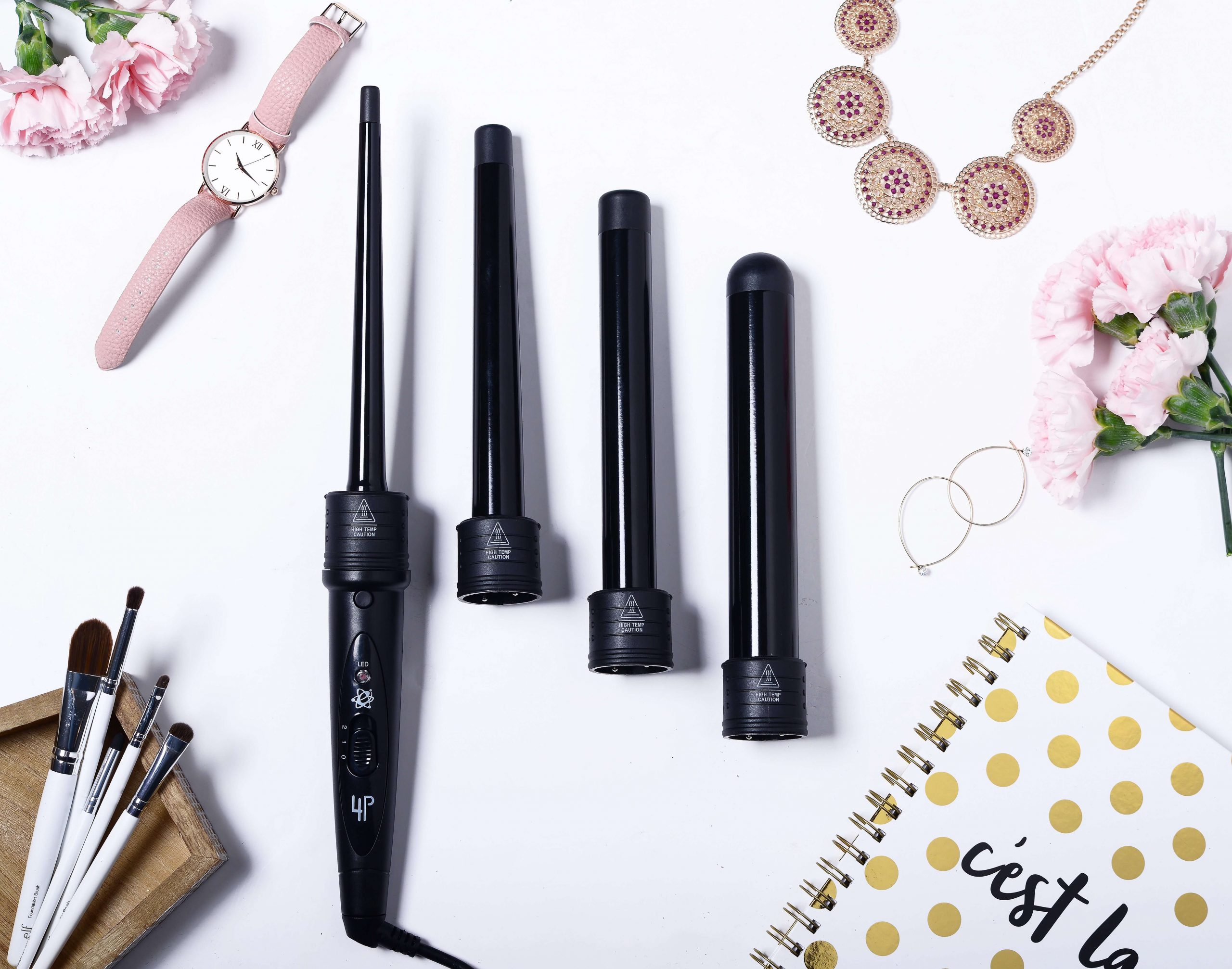
When it comes to hair curlers, the biggest question usually concerns the size of the barrel. The barrel size ultimately determines the kind of wave or curl you’ll be able to achieve. The narrower the barrel, the tighter the curl. In the same way, larger barrels can create big, lived-in curls.
Here at Evalectric, we have four signature barrel sizes: Skinny, Grande, Venti, and Trenta. We discuss each below:
The Skinny Curl Wand is the slimmest iron on our roster of products. A professional-grade iron capable of creating tighter curls, the barrel’s diameter measures 18mm at the base and tapers to a narrow 9mm at the tip. This makes the Skinny Curl Wand surprisingly versatile: you can create tight ringlets, springy coils, or even a wispy fringe with this multi-purpose styling tool. Because of its narrow barrel, this curling wand is great for working with shorter lengths.
If the Skinny Curl Wand happens to be too skinny for your needs, you may want to size up to our Grande Styling Wand. Available in two eye-catching colorways, the Grande Styling Wand features a quick-heating, frizz-smoothing tourmaline barrel that measures 25mm at the base and 18mm at the tip. This size is ideal for creating textured waves and classic spiral curls. If you’re looking to recreate beachy curls from home, this is your best bet!
If you believe bigger is better, why not move another size up? Evalectric’s Venti Curler features a Teflon barrel that tapers from 32mm to 25mm (that’s 1.25 inches to 1 inch). Because of the larger barrel, the Venti Curler makes it easy to achieve looser S-shaped curls and trendy, undone waves.
The supersized Trenta Curler is the widest of all the curling irons on the Evalectric roster. Unlike the rest of the curling wands on this list, it has a uniform diameter of 32mm throughout. The Trenta Curler’s barrel is also made of a unique tourmaline-ceramic hybrid that heats hair quickly while releasing shine-inducing negative ions. If it’s dynamic and long-lasting curls you’re after, the Trenta Curler may just be your match.
Here at Evalectric, we’re all about pioneering holistic hair care. That means using hair care products made from the best ingredients, picking the best state-of-the-art curlers and straighteners, and reminding our customers to sanitize/clean styling tool products regularly.
Are you ready to take the next step of your haircare journey with us? Click through to discover more of Evalectric’s best-selling hair innovations.



